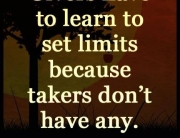“If you realized how powerful your thoughts are, you would never think a negative thought.” Peace Pilgrim
Our thoughts dictate our physical actions, body language indicates our mental/emotional inner state. Changing our core beliefs changes our lives. Whether a labourer or executive, an athlete or couch potato, young or old, we all have a basic need – to feel valued and respected. We can allow our worth to come from the opinions of others, keeping us trapped, or choose to value ourselves & set ourselves free.
Researchers at the Ohio State University now suggest that hostile or angry people are more prone to heart problems because these emotions produce body chemicals (homocysteine). Previous research had already concluded angry people are more prone to heart disease. In experiments the level of homocysteinerose rose as the participant’s anger increased.
Maxwell Maltz in his ground-breaking work, “Pychocybernetics”, showed when a person changes their inner core beliefs, they changed their lives. Once the core beliefs are identified most people make the decision to change these old concepts into more fulfilling ones. If for example, as children, we received more attention when we were sick, as adults we may attempt to gain attention by becoming sick. Sometimes the cost is our health, dignity or potential. If we suppress or withhold aspects of ourselves, we begin to block our true potential & life experience. This is true whether we have aches & pains, life threatening conditions, lack of drive, depression, etc. The more we hold back from being ourselves, the more limited our lives become. Integrating all aspects of self assists us to be motivated and make the most of ourselves and our opportunities.
Our present value may be based on dysfunctional core beliefs which dictate in all areas of our lives. Unless these beliefs are reined in, we may sabotage or devalue ourselves to the point of powerlessness. These beliefs may have been valid once, but soon limit our ability to move on. By positively acknowledging ourselves & our abilities, we become motivated to change.
Some say 94% of all communication is non-verbal. Body language forms a major part communication in nature. Humans & animals act in similar ways. Animals will size up from a distance before moving in to “sniff” each other. Humans do the same thing, (more discreetly). We read the body language of those we come in contact with & make decisions based on first impressions. For most of us this action is unconscious.
Monty Roberts, the man “Who listens to horses” devised a gentle and profound way to work with horses. Monty studied the body language of wild horses and used this language to win their trust and respect. He was also able to do this with wild deer.
An American study clearly shows the influence posture plays. Prisoners in several gaols were shown photos of of a group of people & asked who they would mug. They all picked the same person.
Dr Dorothy Lewis, of New York University, was reported as (finally) recognising that verbal abuse influences physical development. The brain’s of verbally abused adults showed reduced development when compared with a “normal” brain. The hippocampus & the area of the corpus callosum were the most noticeably affected. (At last, there is recognition that verbal abuse is as damaging as physical or sexual abuse). This reduced development shows in the posture of the affected person. Hands turned in, rounded shoulders & spine, scoliosis & pelvic imbalances are just some of the noticeable signs of low self-esteem, developed over years of abuse. Emotionally these people tend to be the victims or the doormats of society. This long term exposure to abuse tends to create internal conflict within these people, who often then turn to forms of self abuse.
An Australian study now confirms that to change poor behaviour in children it is better to work with the parents. My own experience shows that when parents make changes we very rarely need to see with the children.







Leave A Comment
You must be logged in to post a comment.